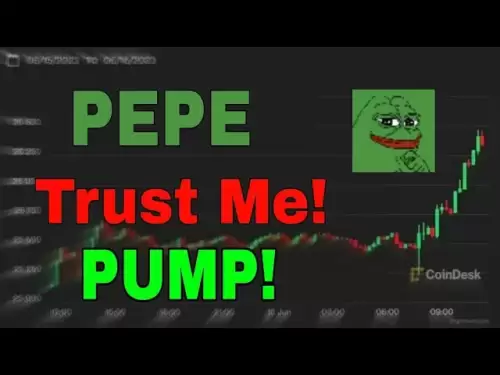-
 Bitcoin
Bitcoin $105,072.9173
-0.46% -
 Ethereum
Ethereum $2,624.9916
-0.45% -
 Tether USDt
Tether USDt $1.0005
0.00% -
 XRP
XRP $2.2087
-1.64% -
 BNB
BNB $667.4636
-0.26% -
 Solana
Solana $153.4648
-2.05% -
 USDC
USDC $0.9999
0.01% -
 Dogecoin
Dogecoin $0.1901
-2.99% -
 TRON
TRON $0.2735
1.88% -
 Cardano
Cardano $0.6782
-2.48% -
 Hyperliquid
Hyperliquid $35.4649
-2.31% -
 Sui
Sui $3.1889
-2.26% -
 Chainlink
Chainlink $13.8726
-3.51% -
 Avalanche
Avalanche $20.2543
-5.33% -
 Stellar
Stellar $0.2672
-2.62% -
 UNUS SED LEO
UNUS SED LEO $8.8766
-0.62% -
 Bitcoin Cash
Bitcoin Cash $403.7804
-0.30% -
 Toncoin
Toncoin $3.1985
-0.02% -
 Shiba Inu
Shiba Inu $0.0...01285
-2.08% -
 Hedera
Hedera $0.1683
-2.57% -
 Litecoin
Litecoin $88.2152
-2.65% -
 Polkadot
Polkadot $4.0484
-3.72% -
 Monero
Monero $317.1060
-8.36% -
 Ethena USDe
Ethena USDe $1.0013
-0.01% -
 Bitget Token
Bitget Token $4.7414
-1.70% -
 Dai
Dai $0.9998
-0.03% -
 Pepe
Pepe $0.0...01196
-3.84% -
 Pi
Pi $0.6489
-0.33% -
 Aave
Aave $265.7810
0.15% -
 Uniswap
Uniswap $6.3507
-5.73%
Will the gap after the gap-down will be filled?
A gap-down in crypto occurs when the price opens lower than its previous close; whether it fills depends on sentiment, volume, news, and liquidity.
May 28, 2025 at 10:57 pm
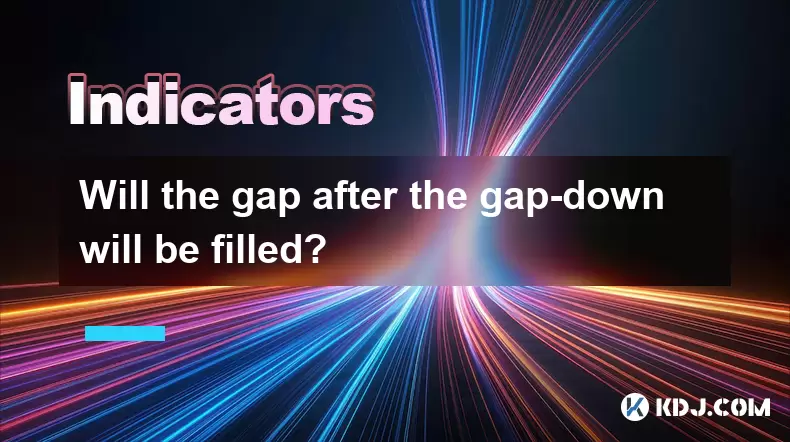
Will the gap after the gap-down be filled?
In the world of cryptocurrencies, understanding market movements and technical analysis is crucial for traders and investors. One common question that arises is whether the gap after a gap-down in a cryptocurrency's price will be filled. To address this, we need to delve into what a gap-down is, how it occurs, and the factors that influence whether the subsequent gap will be filled.
What is a gap-down in the cryptocurrency market?
A gap-down in the cryptocurrency market refers to a situation where the price of a cryptocurrency opens significantly lower than its previous closing price, creating a visible gap on the price chart. This typically happens due to negative news, market sentiment shifts, or significant selling pressure overnight or over a weekend when trading is less active. For example, if Bitcoin closed at $50,000 and opened the next trading day at $48,000, a gap-down would be evident on the chart.
Factors influencing whether a gap will be filled
Several factors can influence whether the gap after a gap-down will be filled. Market sentiment plays a crucial role; if the sentiment remains negative, the gap may not be filled quickly. Trading volume is another important factor; high trading volume can lead to faster gap filling as more traders are actively buying and selling. News and events can also impact the likelihood of a gap being filled; positive news can drive prices up to fill the gap, while continued negative news can keep prices down.
Historical examples of gaps in the cryptocurrency market
Looking at historical data can provide insights into whether gaps are typically filled. For instance, during the 2020 market crash, Bitcoin experienced several gap-downs due to the global economic uncertainty caused by the COVID-19 pandemic. Some of these gaps were filled within weeks as the market recovered, while others took months. Similarly, in 2021, after the Chinese government cracked down on cryptocurrency mining, Bitcoin saw a significant gap-down, which was eventually filled as the market adjusted to the new reality.
Technical analysis and gap filling
Technical analysis can be a useful tool for predicting whether a gap will be filled. Traders often look at support and resistance levels to gauge where the price might move next. If a gap-down occurs near a strong support level, it's more likely that the gap will be filled as the price rebounds from the support. Conversely, if the gap-down happens far from any significant support, filling the gap might take longer or not happen at all. Candlestick patterns and indicators like the Relative Strength Index (RSI) can also provide clues about potential price movements.
Strategies for trading gaps in the cryptocurrency market
Traders can employ various strategies to capitalize on gaps in the cryptocurrency market. One common strategy is gap trading, where traders buy immediately after a gap-down with the expectation that the gap will be filled. This strategy requires careful analysis of market conditions and a clear understanding of the risks involved. Another strategy is waiting for confirmation, where traders wait for the price to start moving back towards the gap before entering a position. This approach can be less risky but may result in missing out on some of the potential gains.
The role of liquidity in gap filling
Liquidity is another critical factor in determining whether a gap will be filled. In highly liquid markets like Bitcoin and Ethereum, gaps are more likely to be filled quickly due to the large number of buyers and sellers. In contrast, less liquid cryptocurrencies might see gaps that remain unfilled for longer periods. Market makers and institutional investors can also influence liquidity and, consequently, the speed at which gaps are filled.
Psychological factors and gap filling
Psychological factors can significantly impact whether a gap will be filled. Fear and greed are powerful emotions in the cryptocurrency market. After a gap-down, fear can keep prices low as traders panic sell, while greed can drive prices back up as traders see an opportunity to buy low. Herd mentality can also play a role, where traders follow the crowd, either exacerbating the gap or helping to fill it.
Regulatory impact on gap filling
Regulatory news can have a substantial impact on whether a gap after a gap-down will be filled. For example, if a major regulatory body announces stricter policies on cryptocurrencies, it could lead to a gap-down and keep prices low, making it less likely for the gap to be filled quickly. Conversely, positive regulatory news can boost investor confidence and help fill the gap.
Volatility and gap filling
The inherent volatility of the cryptocurrency market can both help and hinder gap filling. On one hand, high volatility can lead to rapid price movements that fill gaps quickly. On the other hand, extreme volatility can also cause prices to swing wildly, making it harder to predict whether a gap will be filled. Volatility indicators like the Bollinger Bands can help traders assess the likelihood of a gap being filled based on current market conditions.
Frequently Asked Questions
1. How can I identify a gap-down in real-time trading?
To identify a gap-down in real-time trading, you need to monitor the opening price of a cryptocurrency compared to its previous closing price. Use a reliable trading platform that provides real-time data and charts. If the opening price is significantly lower than the closing price, you can visually confirm the gap-down on the chart.
2. Are there specific cryptocurrencies more prone to gap-downs?
Cryptocurrencies with lower market capitalization and liquidity are generally more prone to gap-downs. For example, altcoins with smaller market caps can experience more significant price gaps due to lower trading volumes and higher susceptibility to market manipulation.
3. Can algorithmic trading influence whether a gap will be filled?
Yes, algorithmic trading can significantly influence whether a gap will be filled. Algorithms designed to buy or sell based on specific market conditions can drive prices towards filling the gap. However, if many algorithms are programmed to sell during a gap-down, it could exacerbate the gap and delay filling.
4. How do weekends and holidays affect gap-downs and gap filling?
Weekends and holidays can exacerbate gap-downs because trading volumes are typically lower, and significant news or events can cause large price movements without immediate market reaction. Gaps that occur over weekends or holidays may take longer to fill due to the delayed market response when trading resumes.
Disclaimer:info@kdj.com
The information provided is not trading advice. kdj.com does not assume any responsibility for any investments made based on the information provided in this article. Cryptocurrencies are highly volatile and it is highly recommended that you invest with caution after thorough research!
If you believe that the content used on this website infringes your copyright, please contact us immediately (info@kdj.com) and we will delete it promptly.
- Curve Finance Warns Users of DNS Hijacking Targeting Its Official Domain
- 2025-06-05 14:10:16
- Pump.fun launches a new reward program for creators, sharing 5 basis points (0.05%) of revenue in SOL with each transaction
- 2025-06-05 14:10:16
- ARK Invest CEO Cathie Wood Applauded Coinbase Global Inc. COIN on Its Inclusion in the S&P 500 Index
- 2025-06-05 14:05:16
- Bullish partners with the Gibraltar Government and GFSC to pioneer world's first crypto clearing regulation
- 2025-06-05 14:05:16
- Ripple's Settlement with the SEC Could Trigger an XRP Price Surge, and Shine a Spotlight on Rising Cross-Border Payment Tokens
- 2025-06-05 14:00:28
- XRP Price Broke Higher and Cleared the $2.150 Resistance Zone
- 2025-06-05 14:00:28
Related knowledge
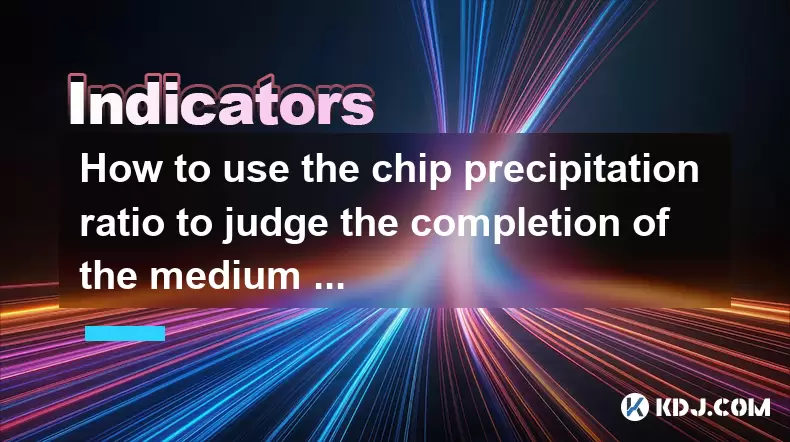
How to use the chip precipitation ratio to judge the completion of the medium and long-term bottom construction?
Jun 04,2025 at 03:36am
The chip precipitation ratio is a crucial metric used by investors to assess the accumulation of chips (or shares) at different price levels over time. This ratio helps in understanding the distribution of chips and can be a powerful tool for determining the completion of medium and long-term bottom construction in the cryptocurrency market. By analyzin...
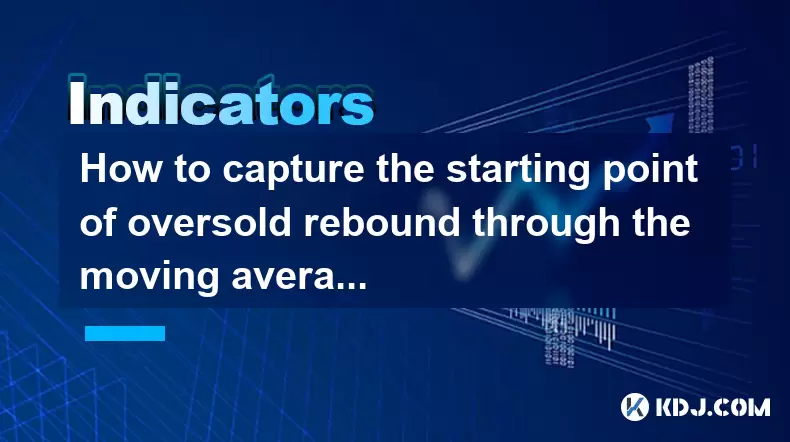
How to capture the starting point of oversold rebound through the moving average gravity reversal strategy?
Jun 04,2025 at 01:01pm
The moving average gravity reversal strategy is a sophisticated approach used by traders to identify potential entry points for buying cryptocurrencies when they are considered oversold. This strategy leverages the concept of moving averages to pinpoint moments when a cryptocurrency might be poised for a rebound. In this article, we will delve into the ...
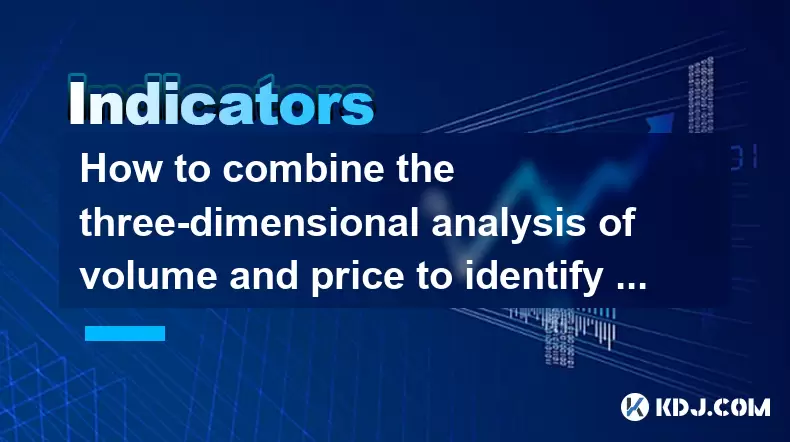
How to combine the three-dimensional analysis of volume and price to identify the golden buying point of breakthrough and retracement?
Jun 03,2025 at 11:42pm
In the dynamic world of cryptocurrencies, identifying the optimal buying points is crucial for maximizing profits and minimizing risks. One effective method to achieve this is by combining three-dimensional analysis of volume and price to pinpoint the golden buying points during breakouts and retracements. This article will delve into how to use this ap...
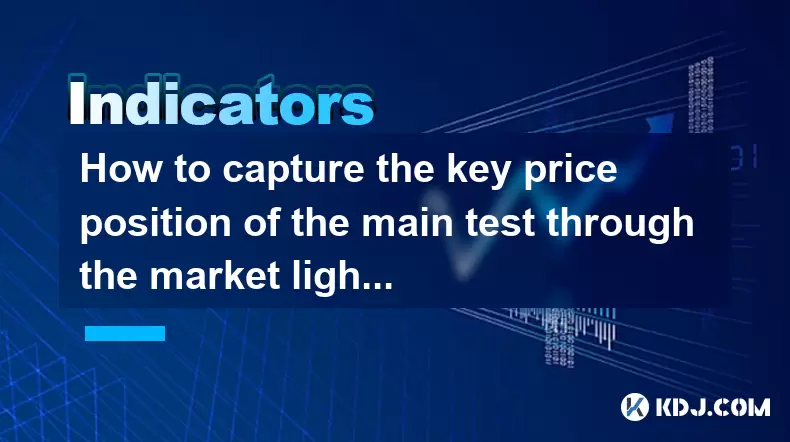
How to capture the key price position of the main test through the market lightning chart?
Jun 02,2025 at 06:07pm
Introduction to Market Lightning ChartThe market lightning chart is a powerful tool used by cryptocurrency traders to visualize price movements and identify key price positions. This chart type provides a detailed view of market activity, allowing traders to spot trends, reversals, and other significant price levels quickly. By understanding how to use ...
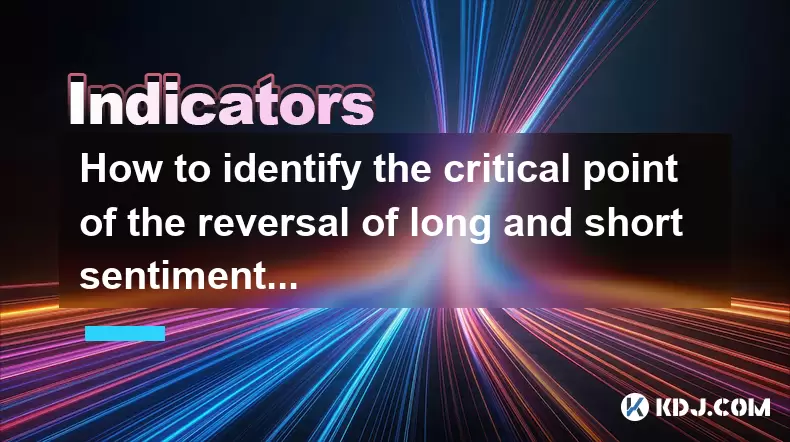
How to identify the critical point of the reversal of long and short sentiment through the K-line reverse package combination?
Jun 01,2025 at 03:36pm
In the world of cryptocurrency trading, understanding the sentiment of the market is crucial for making informed decisions. One effective method to gauge the potential reversal of long and short sentiment is through the analysis of K-line reverse package combinations. This technique involves studying specific patterns and formations within the K-line ch...
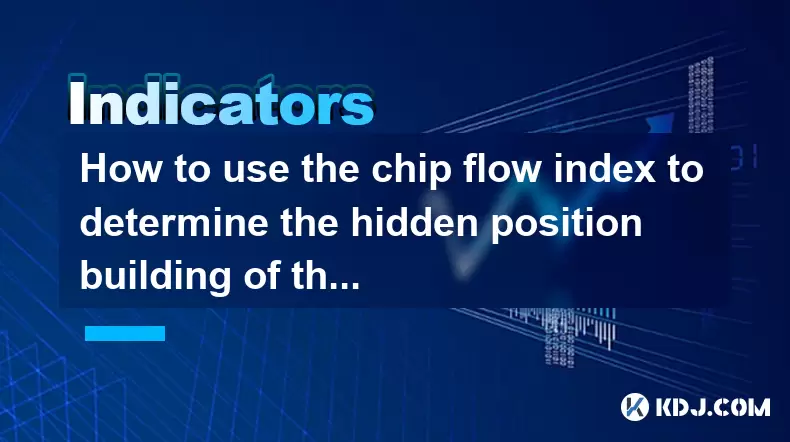
How to use the chip flow index to determine the hidden position building of the main funds?
Jun 01,2025 at 06:57pm
The Chip Flow Index (CFI), often referred to as the Volume Weighted Average Price (VWAP), is a crucial tool used by traders and investors to analyze the behavior of major funds in the cryptocurrency market. Understanding how to use the CFI can provide insights into the hidden position building of these main funds, which is essential for making informed ...

How to use the chip precipitation ratio to judge the completion of the medium and long-term bottom construction?
Jun 04,2025 at 03:36am
The chip precipitation ratio is a crucial metric used by investors to assess the accumulation of chips (or shares) at different price levels over time. This ratio helps in understanding the distribution of chips and can be a powerful tool for determining the completion of medium and long-term bottom construction in the cryptocurrency market. By analyzin...

How to capture the starting point of oversold rebound through the moving average gravity reversal strategy?
Jun 04,2025 at 01:01pm
The moving average gravity reversal strategy is a sophisticated approach used by traders to identify potential entry points for buying cryptocurrencies when they are considered oversold. This strategy leverages the concept of moving averages to pinpoint moments when a cryptocurrency might be poised for a rebound. In this article, we will delve into the ...

How to combine the three-dimensional analysis of volume and price to identify the golden buying point of breakthrough and retracement?
Jun 03,2025 at 11:42pm
In the dynamic world of cryptocurrencies, identifying the optimal buying points is crucial for maximizing profits and minimizing risks. One effective method to achieve this is by combining three-dimensional analysis of volume and price to pinpoint the golden buying points during breakouts and retracements. This article will delve into how to use this ap...

How to capture the key price position of the main test through the market lightning chart?
Jun 02,2025 at 06:07pm
Introduction to Market Lightning ChartThe market lightning chart is a powerful tool used by cryptocurrency traders to visualize price movements and identify key price positions. This chart type provides a detailed view of market activity, allowing traders to spot trends, reversals, and other significant price levels quickly. By understanding how to use ...

How to identify the critical point of the reversal of long and short sentiment through the K-line reverse package combination?
Jun 01,2025 at 03:36pm
In the world of cryptocurrency trading, understanding the sentiment of the market is crucial for making informed decisions. One effective method to gauge the potential reversal of long and short sentiment is through the analysis of K-line reverse package combinations. This technique involves studying specific patterns and formations within the K-line ch...

How to use the chip flow index to determine the hidden position building of the main funds?
Jun 01,2025 at 06:57pm
The Chip Flow Index (CFI), often referred to as the Volume Weighted Average Price (VWAP), is a crucial tool used by traders and investors to analyze the behavior of major funds in the cryptocurrency market. Understanding how to use the CFI can provide insights into the hidden position building of these main funds, which is essential for making informed ...
See all articles
























